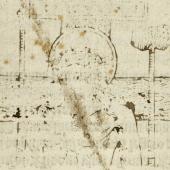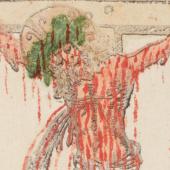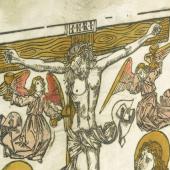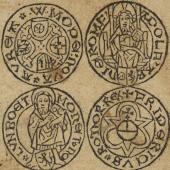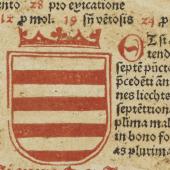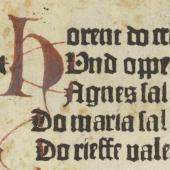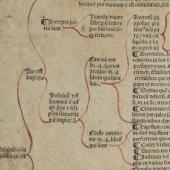‘The remarkable survival of a single sheet’
Private lives of print
Assessing the precise output of the printing press in its earliest years is problematic because much has been lost. Single-sheet publications in particular are rare, due to their fragile nature and the ways in which they were used; calendars, public notices and medical charts were pinned to walls and frequently consulted, whilst indulgences were personal and time-limited.
Where single sheets have survived it is often due to their later repurposing. Paper and parchment were expensive commodities, and printed sheets would be recycled once their initial usefulness had passed. Bookbinders used waste of all types to line the spines and boards of books, and many of our most ephemeral pieces of early printing owe their survival to this practice.
Single-sheet printed devotional images were used in a variety of ways in the fifteenth century, few of which were conducive to their survival. Pasted to walls, glued to wooden panels, inside boxes or to pieces of furniture, only a handful of the thousands of impressions which were produced have survived. A significant proportion of survivals stem from the practice of pasting single-sheet images into books, both printed and manuscript, to act as devotional aids and stimuli. Prints in books offer us a unique insight into the contemporary use of devotional images and into the complex interplay between manuscript and print.
Exhibition curator Ed Potten discusses a selection of the broadsides in the display in this film.
